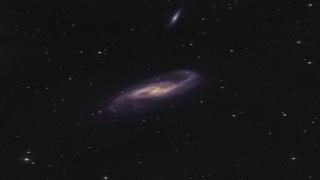Carton, David; Brinchmann, Jarle; Shirazi, Maryam; Contini, Thierry; Epinat, Benoît; Erroz-Ferrer, Santiago; Marino, Raffaella A.; Martinsson, T.; Richard, Johan; Patrício, Vera
Referencia bibliográfica
Monthly Notices of the Royal Astronomical Society, Volume 468, Issue 2, p.2140-2163
Fecha de publicación:
6
2017
Número de citas
33
Número de citas referidas
31
Descripción
We present a method to recover the gas-phase metallicity gradients from
integral field spectroscopic (IFS) observations of barely resolved
galaxies. We take a forward modelling approach and compare our models to
the observed spatial distribution of emission-line fluxes, accounting
for the degrading effects of seeing and spatial binning. The method is
flexible and is not limited to particular emission lines or instruments.
We test the model through comparison to synthetic observations and use
downgraded observations of nearby galaxies to validate this work. As a
proof of concept, we also apply the model to real IFS observations of
high-redshift galaxies. From our testing, we show that the inferred
metallicity gradients and central metallicities are fairly insensitive
to the assumptions made in the model and that they are reliably
recovered for galaxies with sizes approximately equal to the half width
at half-maximum of the point spread function. However, we also find that
the presence of star-forming clumps can significantly complicate the
interpretation of metallicity gradients in moderately resolved
high-redshift galaxies. Therefore, we emphasize that care should be
taken when comparing nearby well-resolved observations to high-redshift
observations of partially resolved galaxies.
Proyectos relacionados

Las Galaxias Espirales: Evolución y Consecuencias
Nuestro grupo pequeño esta bien conocido y respetado internacionalmente por nuestro trabajo inovativo e importante en varios aspectos de la estructura y la evolución de las galaxias espirales cercanas. Usamos principalmente observaciones en varias longitudes de onda, explotando las sinergías que nos permiten responder a las cuestiones más
Johan Hendrik
Knapen Koelstra